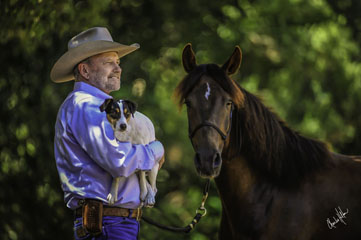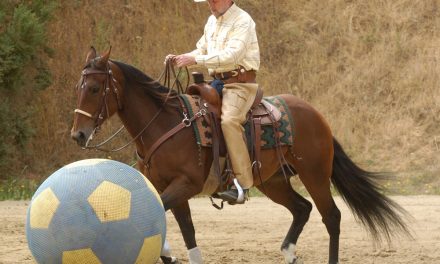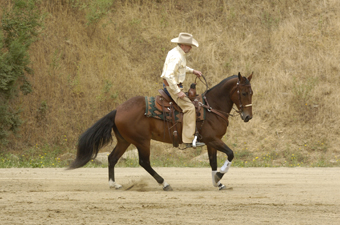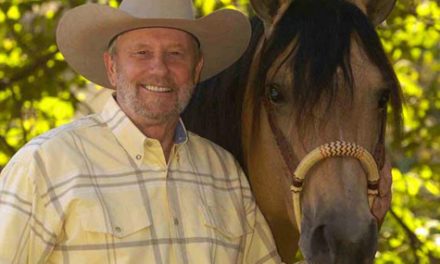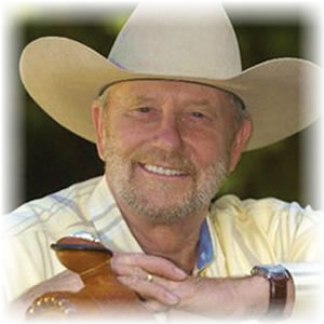
Hoof care is an important element in the care of a horse. With a
young horse it is really important to start foot care early.
Handle the feet as soon as a foal will allow it. You can prevent a
lot of conformation problems by trimming early. Sometimes a
hoof grows upright and boxy instead of at an angle like a
normal hoof. This is called a clubfoot. My horse Jaz was out in
pasture for a year and apparently nothing was done to her feet
during that time. She developed a clubfoot and she had to have
corrective trimming. The feet have come along just fine;
however, it would have been easier if her feet hand been
trimmed earlier and checked to make sure that the hoof angles
were correct. If you start correcting this condition while the
horse is young, depending on the degree of the problem, by the
time you get ready to start riding, you will hardly be able to tell
the horse had a clubfoot.
Every horse, including a foal, needs to accept a farrier. For a
young horse, it is important for the initial visit to go well.
Horses have very good situational memories, so a bad first
experience with the farrier can be hard to overcome. Whether
you are getting ready for the first visit or overcoming problems
with work done earlier, the foundation steps are the same. The
only difference may be the time you have to spend on each
lesson.
Your primary goals are straightforward. Your horse needs to
accept being touched everywhere and to have that contact
made by a stranger. These requirements represent significant
pressure, especially for a young horse. These are cornerstones
to your horse’s training and must be approached with careful
planning, patience and consistency. Groom, pet and touch your
horse everywhere. Encourage your friends and family
members to groom and pet your horse. If your horse is at a
facility where the vet and farrier visit regularly, ask them to
stop by and briefly visit with your horse. Ask them to stroke,
pet and give verbal praise to help get your horse comfortable
with them when he is not being worked on.
There are two common mistakes people make when working
with a horse’s feet for the first time. First, they ask the horse to
pick up his feet too high and for too long a time. Second, they
rush through this part of the horse’s training. Horses are prey
animals with strong flight instincts. When they give you their
feet, they are giving up their ability to run, and that is asking
for a lot of trust. Start by asking for the feet to be up only an
inch or so off the ground and only for a few seconds. When you
can do that with all four feet, ask for a few seconds longer, still
keeping the hoof low. Over time you can bring the foot higher.
Try not to release the foot if the horse is resisting. You want to
release only when the horse is giving the hoof and is relaxed.
Once the horse is comfortable with having the feet held up
higher and longer than a farrier will want, get yourself a rasp
and practice moving it across the hoof wall. Run the rasp back
and forth to get the horse used to the feel and sound around his
feet. In order to get the horse used to the extreme limits of the
experience, tap the hooves with a hammer and make more
noise and contact than a farrier would.
I am often asked about bare feet versus shod feet. I have had
horses at the ranch whose feet were like iron. When they were
ridden up and sown the trail, their feet held up just fine.
However, the majority of horse’ hooves, in my opinion about
75 percent, don’t hold up this well. This may be because of
poor conformation of the feet due to breeding or neglect, and
those horses need shoes. Bare feet are popular at time and you
may want to try this if your horse is at home and not being
worked. If your horse is in training or being worked, shoes are
a must.
Each breed has certain hoof problems. For example,
Thoroughbred horses used for racing tend to grow a lot of toe
and have low-slung heels. A lot of Quarter horses used as halter
horses in the show world are bred to have small feet. Work
with your farrier to determine if your horse requires shoes or
even special shoes.
The general rule is to have trimming done every six to eight
weeks, with eight weeks being the longest a horse should go
between trims. Through experience I have learned that the
bigger the shoe you can put on your horse, the better.
Sometimes farriers want to put on a smaller shoe because it is
less likely to be pulled off. I call this cowboy shoeing. On a large
ranch when a cowboy is out riding, doing ranch work with his
horse, he can’t afford to have a show come off. I have had
farriers tell me a larger shoe will not cause a hoof to grow. This
is true, a larger shoe won’t cause a hoof to grow, but when the
hoof rows naturally, a larger shoe will allow the hoof to
expand.
It really behooves you to be well informed about hoof care. If
you think your horse has hoof problems, I recommend that you
check with your vet and see that the farrier does what the vet
recommends. The two of them should work together as a team.
If the farrier is not communicating with you about what he is
seeing with the hooves and what he is doing about it, consider
getting a different farrier. You are the boss; the horse belongs
to you. You have invested a lot of time and money and you
want your horse healthy and sound.

